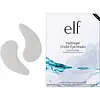What's inside
What's inside
 Key Ingredients
Key Ingredients

 Benefits
Benefits

 Concerns
Concerns

No concerns
 Ingredients Side-by-side
Ingredients Side-by-side

Water
Skin ConditioningButylene Glycol
HumectantGlycerin
HumectantCeratonia Siliqua Gum
EmollientSucrose
HumectantCeramide AP
Skin Conditioning1,2-Hexanediol
Skin ConditioningAgar
MaskingXanthan Gum
EmulsifyingChondrus Crispus
MaskingCellulose Gum
Emulsion StabilisingAllantoin
Skin ConditioningPEG-40 Hydrogenated Castor Oil
EmulsifyingHydroxyacetophenone
AntioxidantDisodium EDTA
Sodium Hydroxide
BufferingSyzygium Aqueum Fruit Water
Skin ConditioningNiacinamide
SmoothingGlycine Soja Seed Extract
Skin ConditioningSodium Hyaluronate
HumectantDipotassium Glycyrrhizate
HumectantHydroxyethylcellulose
Emulsion StabilisingAcrylates/C10-30 Alkyl Acrylate Crosspolymer
Emulsion StabilisingPEG/PPG-17/6 Copolymer
SolventPolyacrylic Acid
Emulsion StabilisingParfum
MaskingWater, Butylene Glycol, Glycerin, Ceratonia Siliqua Gum, Sucrose, Ceramide AP, 1,2-Hexanediol, Agar, Xanthan Gum, Chondrus Crispus, Cellulose Gum, Allantoin, PEG-40 Hydrogenated Castor Oil, Hydroxyacetophenone, Disodium EDTA, Sodium Hydroxide, Syzygium Aqueum Fruit Water, Niacinamide, Glycine Soja Seed Extract, Sodium Hyaluronate, Dipotassium Glycyrrhizate, Hydroxyethylcellulose, Acrylates/C10-30 Alkyl Acrylate Crosspolymer, PEG/PPG-17/6 Copolymer, Polyacrylic Acid, Parfum
Water
Skin ConditioningPolyacrylic Acid
Emulsion StabilisingGlycerin
HumectantOlea Europaea Fruit Oil
MaskingAngelica Archangelica Root Water
Skin ConditioningSodium Hydroxide
BufferingGinkgo Biloba Leaf Extract
Skin ConditioningAcetyl Hexapeptide-8
HumectantHydrolyzed Extensin
Skin ConditioningAgar
MaskingCaprylyl Glycol
EmollientPerfluorodecalin
Skin ConditioningSimmondsia Chinensis Seed Oil
EmollientXanthan Gum
EmulsifyingUbiquinone
AntioxidantThymus Vulgaris Flower/Leaf Extract
MaskingBuddleja Davidii Extract
Skin ConditioningRubus Chamaemorus Seed Oil
Skin ConditioningOxycoccus Palustris Seed Oil
AntioxidantAluminum Glycinate
AstringentPolysorbate 60
EmulsifyingCeramide NP
Skin Conditioning1,2-Hexanediol
Skin ConditioningSucrose Palmitate
EmollientPotassium Sorbate
PreservativeSodium Benzoate
MaskingWater, Polyacrylic Acid, Glycerin, Olea Europaea Fruit Oil, Angelica Archangelica Root Water, Sodium Hydroxide, Ginkgo Biloba Leaf Extract, Acetyl Hexapeptide-8, Hydrolyzed Extensin, Agar, Caprylyl Glycol, Perfluorodecalin, Simmondsia Chinensis Seed Oil, Xanthan Gum, Ubiquinone, Thymus Vulgaris Flower/Leaf Extract, Buddleja Davidii Extract, Rubus Chamaemorus Seed Oil, Oxycoccus Palustris Seed Oil, Aluminum Glycinate, Polysorbate 60, Ceramide NP, 1,2-Hexanediol, Sucrose Palmitate, Potassium Sorbate, Sodium Benzoate
 Reviews
Reviews

Ingredients Explained
These ingredients are found in both products.
Ingredients higher up in an ingredient list are typically present in a larger amount.
1,2-Hexanediol is a synthetic liquid and another multi-functional powerhouse.
It is a:
- Humectant, drawing moisture into the skin
- Emollient, helping to soften skin
- Solvent, dispersing and stabilizing formulas
- Preservative booster, enhancing the antimicrobial activity of other preservatives
Agar is the vegan substitute for animal-gelatin. It helps thicken and improve the texture of cosmetics. It comes from cell-walls of red algae.
Glycerin is already naturally found in your skin. It helps moisturize and protect your skin.
A study from 2016 found glycerin to be more effective as a humectant than AHAs and hyaluronic acid.
As a humectant, it helps the skin stay hydrated by pulling moisture to your skin. The low molecular weight of glycerin allows it to pull moisture into the deeper layers of your skin.
Hydrated skin improves your skin barrier; Your skin barrier helps protect against irritants and bacteria.
Glycerin has also been found to have antimicrobial and antiviral properties. Due to these properties, glycerin is often used in wound and burn treatments.
In cosmetics, glycerin is usually derived from plants such as soybean or palm. However, it can also be sourced from animals, such as tallow or animal fat.
This ingredient is organic, colorless, odorless, and non-toxic.
Glycerin is the name for this ingredient in American English. British English uses Glycerol/Glycerine.
Learn more about GlycerinWe don't have a description for Polyacrylic Acid yet.
Sodium Hydroxide is also known as lye or caustic soda. It is used to adjust the pH of products; many ingredients require a specific pH to be effective.
In small amounts, sodium hydroxide is considered safe to use. However, large amounts may cause chemical burns due to its high alkaline.
Your skin has a natural pH and acid mantle. This acid mantle helps prevent harmful bacteria from breaking through. The acid mantle also helps keep your skin hydrated.
"Alkaline" refers to a high pH level. A low pH level would be considered acidic.
Learn more about Sodium HydroxideWater. It's the most common cosmetic ingredient of all. You'll usually see it at the top of ingredient lists, meaning that it makes up the largest part of the product.
So why is it so popular? Water most often acts as a solvent - this means that it helps dissolve other ingredients into the formulation.
You'll also recognize water as that liquid we all need to stay alive. If you see this, drink a glass of water. Stay hydrated!
Learn more about WaterXanthan gum is used as a stabilizer and thickener within cosmetic products. It helps give products a sticky, thick feeling - preventing them from being too runny.
On the technical side of things, xanthan gum is a polysaccharide - a combination consisting of multiple sugar molecules bonded together.
Xanthan gum is a pretty common and great ingredient. It is a natural, non-toxic, non-irritating ingredient that is also commonly used in food products.
Learn more about Xanthan Gum